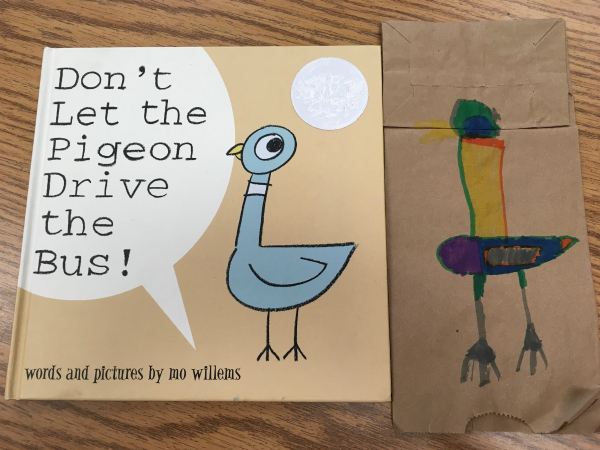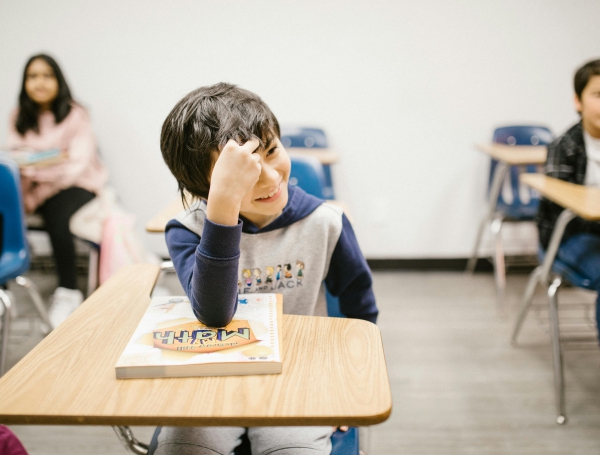

A Step-by-Step Guide for Using Puppets to Nurture Your Primary Students’ Reading Development
March 5, 2018
Young children benefit from interacting with the same story again and again. They develop rich story language, learn new vocabulary words, and build understanding of character, plot, and setting. These skills help children grow into expressive, fluent, meaningdriven readers.
One way to help your students gain an even deeper understanding of a familiar story is to help them plan and perform puppet shows.
The following is a step-by-step guide from Kindergarten Teacher Bonnie Makovec.
1. Choose books
Select books with enough depth that students will discover more and more with each read. Look for books with rich dialogue and a diversity of characters. You may also want to acquire multiple copies of each book so that students can explore the books on their own throughout the day.

2. Provide exposure to your books of choice
Read each book aloud multiple times, addressing a different focus each time. Engage students in each read aloud by encouraging them to pantomime a character’s actions, repeat dialogue in a character’s voice, and discuss surprising events with a partner.
3. Create groups and assign roles
Create groups in which the number of students directly correlates to the number of characters in the text. Some students may want to take on the part of a narrator. Once everyone has a role, distribute materials with which to create simple puppets. Brown paper bags and markers work well. Of course, googly eyes, yarn hair, and other craft materials add even more excitement!
4. Provide time to rehearse
Depending on the quality you are looking for, give students one or more period to rehearse. Teach your students to use the book as a guide: turn the page, act out what they see, and turn the page again. Take advantage of this opportunity to teach your students essential social skills such as turntaking and negotiation.

5. Enjoy each production!
Sit back, relax, and enjoy watching your students bring their stories alive! You might even want to videotape each performance and share on your school’s social media account. Celebrate your students’ hard work by eliciting compliments from the audience at the end of each show. Give your student audience sentence frames such as, “I like the way you ______.”
6. Provide time for reflection
While watching one another’s shows, your students will probably have ideas about how they could have made their show even better. Give them time to process this by talking, writing, or even creating a whole new puppet show about a different book.
7. Keep the fun alive by incorporating puppets into your everyday schedule!
● Place stick puppets in each child’s book baggie so they can act out books alone or with a
partner.
● Encourage students to write their own stories to act out. Remind them that the best
shows have interesting characters and exciting plot lines.
● Set up a puppet show theater in your classroom for students to use during play centers.
● Stock your art center with puppetmaking supplies such as brown paper bags, googly
eyes, yarn, felt, and scraps of fabric.
This is a guest post by contributor, Bonnie Makovec.
 Bonnie Makovec teaches kindergarten at a diverse public school in San Francisco. She's passionate about meeting the needs of all of her students through challenging, authentic learning experiences. On weekends she enjoys video chatting with her nieces and nephew, spotting whales in the Pacific Ocean, and searching for the best vegetarian food in the Bay Area.
Bonnie Makovec teaches kindergarten at a diverse public school in San Francisco. She's passionate about meeting the needs of all of her students through challenging, authentic learning experiences. On weekends she enjoys video chatting with her nieces and nephew, spotting whales in the Pacific Ocean, and searching for the best vegetarian food in the Bay Area.
Bonnie's favorite books to do puppet shows with are:
Froggy Gets Dressed (Jonathon London)
The Three Billy Goats Gruff (Paul Galdone)
Don't Let the Pigeon Drive the Bus (Mo Willems)


_600_455_s_c1.jpg)
_600_455_s_c1.png)
